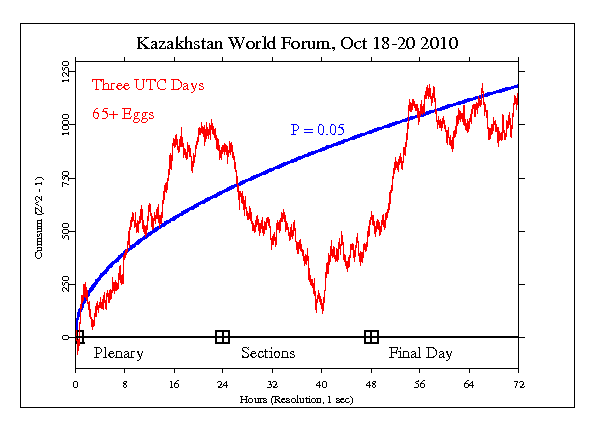World Forum of Spiritual Culture, 2010 |
|
The World Forum of Spiritual Culture, October 18-20 2010 was a rich experience for the people assembled, but more relevant for the GCP was that it was a potentially world-changing event. In some parts of the world (perhaps especially the US) there was little cognizance, but because the 500+ delegates came from some 70 countries, many of which are more advanced in their concerns for the future of the planet, this seems a viable "global event." At 3 days, it is longer than we usually specify, and the interpretation of results is more difficult than short, sharply focused events. It was a gathering of people from around the world all interested in the conscious evolution that must be our future. Noosphere -- the sheath of intelligence predicted by Vernadsky and Teilhard -- was a familiar concept among the delegates to this meeting, which was supported directly by the President and the government of Kazakhstan, and by its extraordinarily multicultural people. We gathered in Astana, the capital city (newly built after the dissolution of the USSR -- and architecturally amazing) and were welcomed with warmth and generosity. We had talks in plenary sessions and a day with nine concurrent topical sections, labeled in the results graph below. The section in which I participated addressed a "Noospheric Ethical/Ecological Constitution" designed to help individuals and nations to interact in a life-giving way. I spoke of the GCP results as evidence for a noosphere, and supportive of such a Noo-Constitution. For more on the meeting, please see the October 2010 entry in the GCP Update blog. The event was set for the three days of the meeting, beginning at 9am on the 18th and ending 72 hours later. The result has lengthy periods of consistent positive and negative deviation, as the graph shows, but ends with a substantial positive accumulated deviation. Chisquare is 260310 on 259200 df for p = 0.062 and Z = 1.535.

It is important to keep in mind that we have only a tiny statistical effect, so that it is always hard to distinguish signal from noise. This means that every "success" might be largely driven by chance, and every "null" might include a real signal overwhelmed by noise. In the long run, a real effect can be identified only by patiently accumulating replications of similar analyses.
|